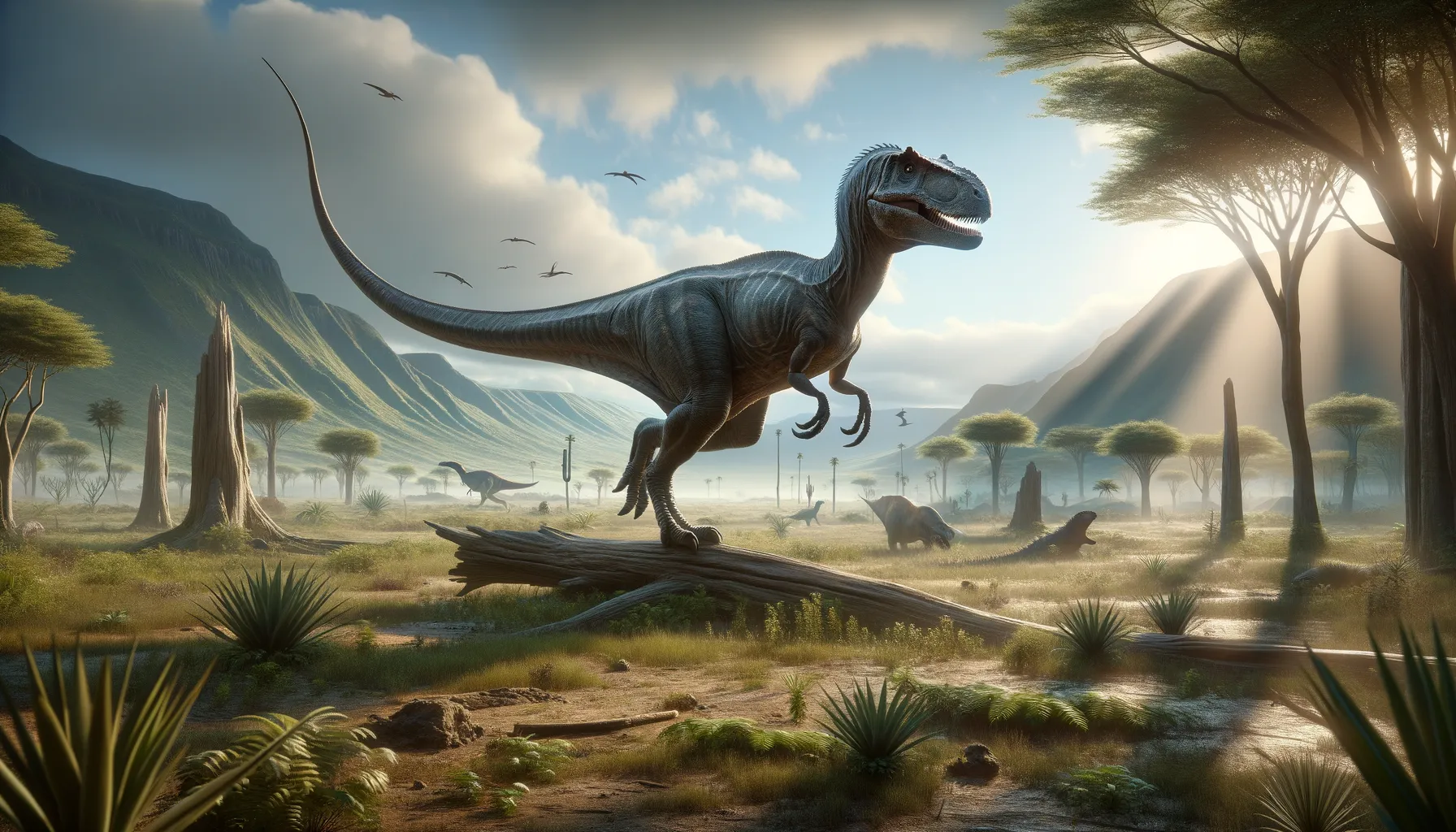
Halticosaurus
Swift predator of the Triassic dawn.
Period
Triassic
Length
About 3 to 4 meters long.
Height
Approximately 1 meter tall at the hip.
Weight
Estimated around 45 to 60 kilograms.
Halticosaurus was a small to medium-sized theropod dinosaur that roamed the Earth during the late Triassic period. Its lightweight build and bipedal stance were adapted for agility and quick movement. With a carnivorous diet, this dinosaur likely thrived in varied environments. Fossil evidence suggests it lived in what is now Europe, providing insights into early dinosaur evolution.
Diet
Halticosaurus was a carnivore, primarily feeding on small vertebrates and insects. Its agile nature enabled it to catch prey quickly, making it an effective hunter in its ecological niche.
Hunting
This dinosaur likely relied on stealth and speed to hunt, using its keen senses to detect prey. It may have ambushed smaller animals, using quick bursts of speed to capture its meals.
Environmental challenges
During the late Triassic, the climate was changing, leading to evolving ecosystems. Halticosaurus faced the challenge of finding food as competition increased among predators. Seasonal variations and environmental pressures required adaptability to survive.
Speed
Moderate, allowing it to escape predators.
Lifespan
Lived up to approximately 10 to 15 years.
First discovery
First discovered in Germany in the late 19th century.
Fun Facts
- Halticosaurus was a small dinosaur that lived during the Late Triassic period, around 210 million years ago.
- It was a nimble predator, likely using its strong legs to run swiftly after prey.
- Halticosaurus belonged to a group of early theropod dinosaurs which later gave rise to famous carnivores like T. rex and Velociraptor.
- Fossils of Halticosaurus have mostly been found in Germany, indicating it lived in areas that were part of a warm, seasonal climate.
- Despite being a dinosaur, it was relatively small, estimated to be about the size of a large dog.
- Halticosaurus had sharp teeth and claws, suggesting it was well adapted for hunting small animals.
- Its name, Halticosaurus, means 'nimble lizard,' capturing its likely agile nature.
Growth and Development
Hatchlings were vulnerable and required quick growth to reach maturity. Juveniles likely relied on their speed to avoid predators. Growth rates may have been influenced by food availability and environmental conditions.
Habitat
Halticosaurus inhabited semi-arid regions with seasonal rains, which supported lush flora. These environments were ideal hunting grounds for small theropods. Rivers and lakes in these areas provided essential resources.
Interaction with other species
Halticosaurus existed alongside other Triassic fauna, competing for resources. It might have had predator-prey interactions with smaller mammals and reptiles. Coexistence with other theropods indicated possible competition.
Natural lifespan
Its natural lifespan was likely around 10 to 15 years.
Reproduction
Egg-laying was the primary mode of reproduction for Halticosaurus. Nests may have been built in secluded areas to protect eggs from predators. Parental care is uncertain, but young ones were probably left to fend for themselves shortly after hatching.
Social behaviour
Limited evidence suggests that Halticosaurus was likely solitary or lived in small groups. Social interactions may have been minimal, focused on mating or territory defense. Competition for food could have led to aggressive encounters.
Fossil locations
Fossils of Halticosaurus have been primarily found in Germany. These fossils provide insights into its anatomy and behavior. They help reconstruct the ecosystem dynamics of the late Triassic period in Europe.
